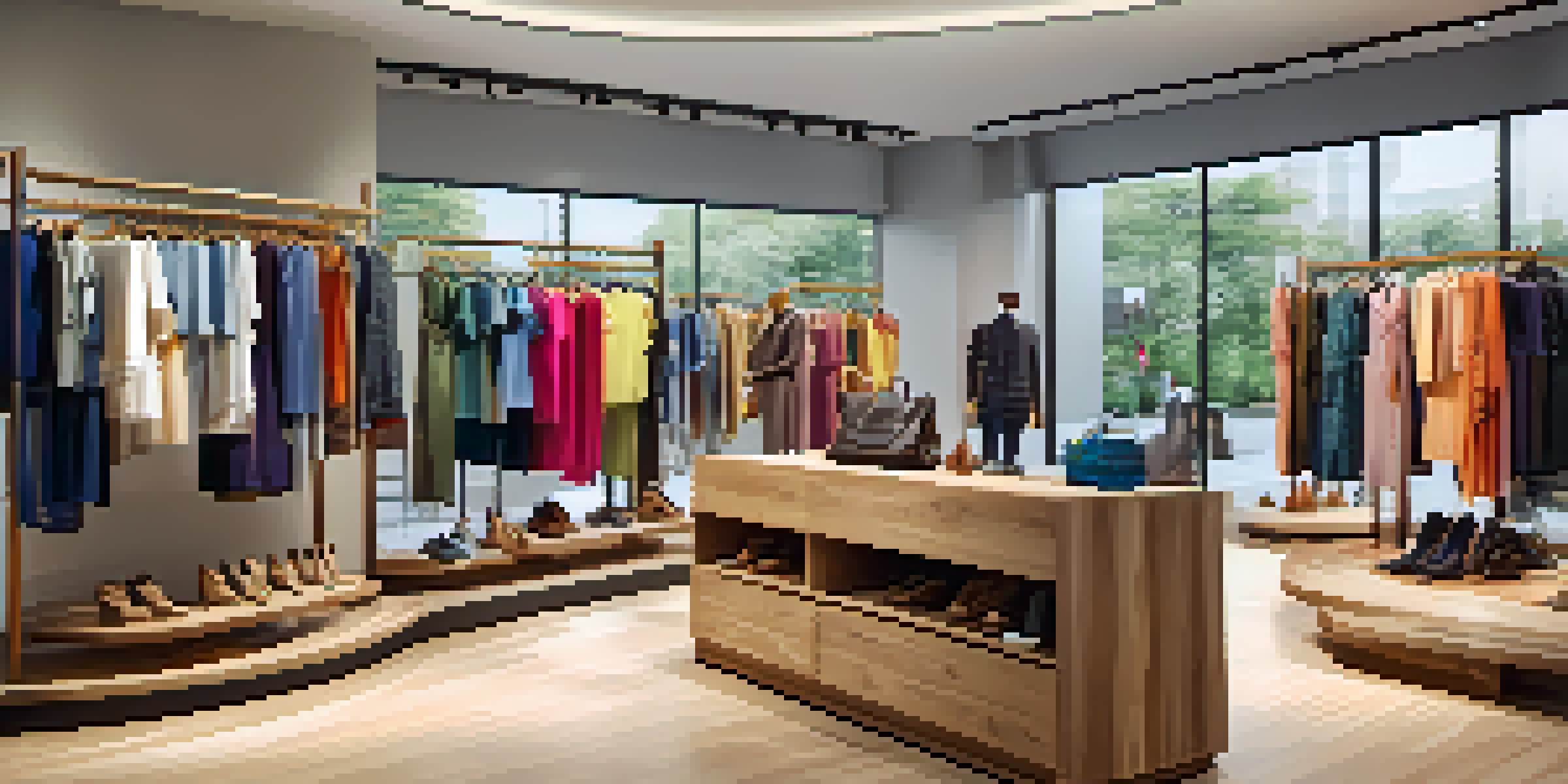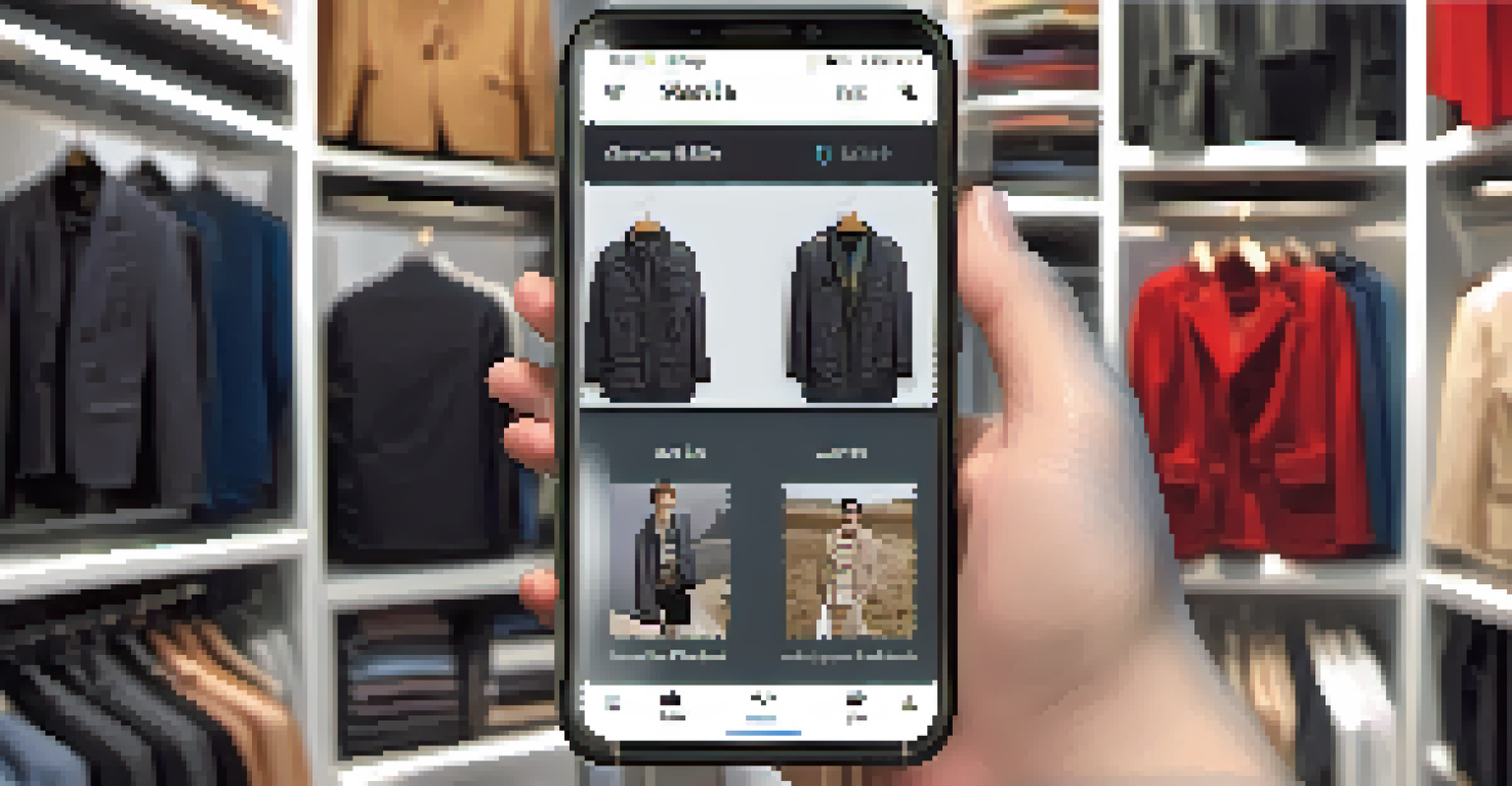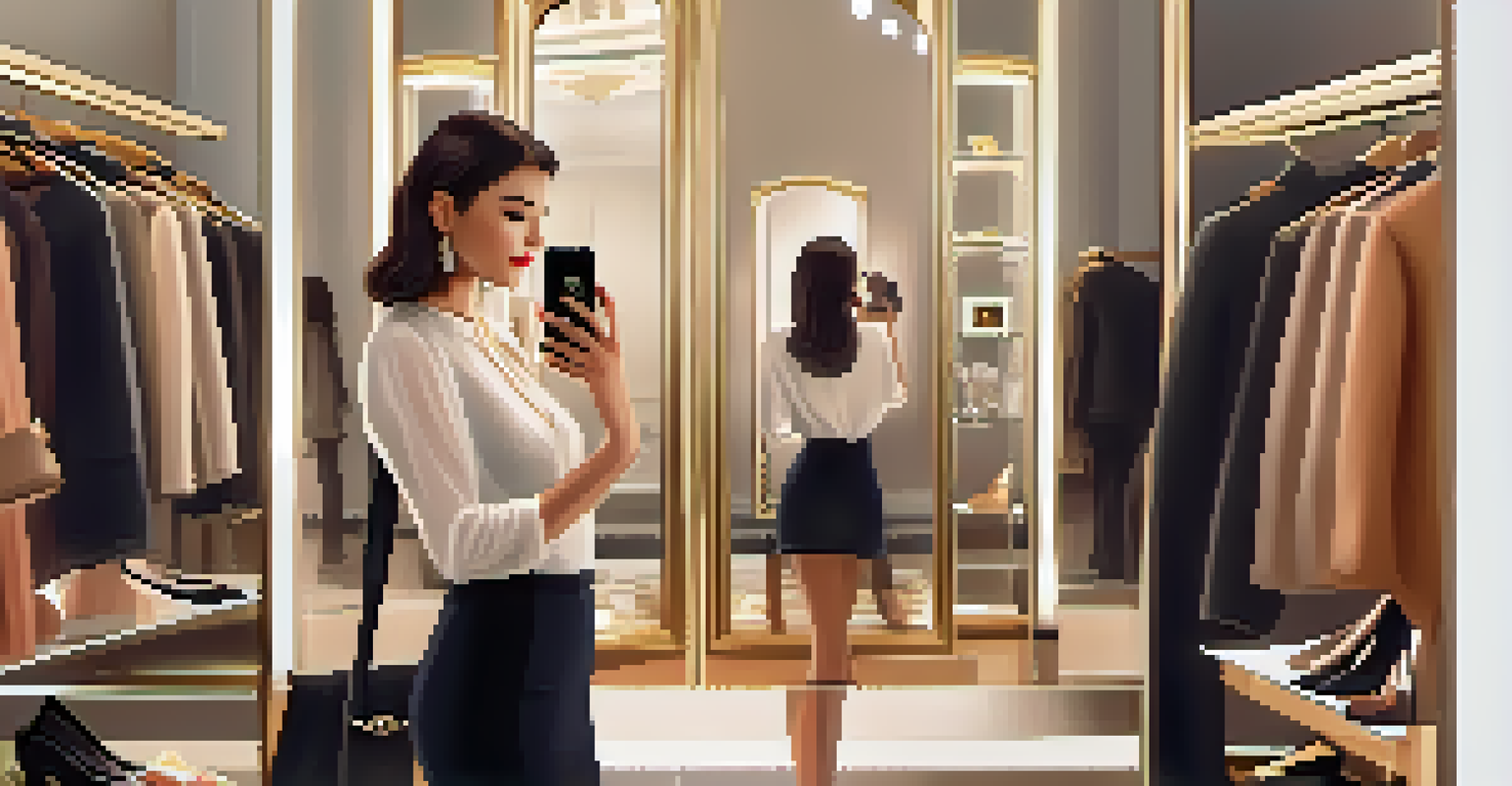AI-Driven Visual Search: Enhancing Fashion Retail Experiences

Understanding AI-Driven Visual Search in Fashion Retail
AI-driven visual search is a technology that allows customers to search for products using images instead of text. Imagine snapping a picture of your favorite outfit and instantly finding similar styles available for purchase. This innovative approach enhances the shopping experience by making it more intuitive and personalized.
The future of retail is not about the transaction, it's about the experience.
With advanced algorithms and machine learning, visual search tools analyze the colors, patterns, and shapes in an image to deliver relevant results. This technology goes beyond mere keyword matching, providing a more dynamic way for consumers to connect with products they love. In the fashion retail sector, where visual appeal is paramount, this capability is a game changer.
As customers increasingly rely on visuals in their shopping journey, retailers must adapt to this shift. Implementing AI-driven visual search not only meets consumer expectations but also gives brands a competitive edge in a crowded marketplace.
The Benefits of Visual Search for Fashion Retailers
Visual search offers numerous benefits for fashion retailers looking to engage customers more effectively. One major advantage is improved user experience; customers can find what they want quickly without sifting through endless product listings. This time-saving feature is particularly appealing to the modern shopper, who values convenience.

Moreover, visual search can lead to increased conversion rates. When customers find items that match their preferences effortlessly, they're more likely to complete a purchase. By reducing friction in the shopping process, retailers can capitalize on impulse buys and encourage customer loyalty.
Visual Search Enhances Shopping
AI-driven visual search allows customers to find products using images, creating a more intuitive and personalized shopping experience.
Additionally, the data collected from visual searches can provide valuable insights into consumer behavior. Retailers can analyze trends and preferences, enabling them to tailor their offerings and marketing strategies to better align with customer desires.
How AI Enhances Product Discovery for Consumers
AI-powered visual search revolutionizes product discovery by allowing users to explore fashion items in a more engaging way. Instead of relying solely on text-based searches, customers can discover new styles and products that catch their eye. This visual approach can lead to unexpected finds, making online shopping feel more like an adventure.
Technology is best when it brings people together.
For instance, a customer might upload a picture of a trendy jacket spotted on social media. The visual search tool can instantly recommend similar jackets, accessories, or even complete outfits that match the original image. This personalized touch enhances customer satisfaction and encourages exploration of the brand's entire product range.
Furthermore, the ability to search visually can empower consumers to express their unique style. With visual search, shoppers can experiment with different looks and trends, fostering creativity and self-expression in their fashion choices.
Challenges Faced by Retailers Implementing Visual Search
While the benefits of AI-driven visual search are significant, retailers may encounter challenges during implementation. One primary hurdle is the need for high-quality image databases. To ensure accurate search results, brands must invest in robust image management systems that provide clear, detailed photos of their products.
Another challenge lies in educating consumers about how to use visual search effectively. Some shoppers may be unfamiliar with the technology, leading to hesitation in adopting this new method. Retailers must provide clear instructions and support to guide customers in utilizing visual search to its full potential.
Boosts Engagement and Sales
Implementing visual search can lead to increased conversion rates by helping customers find desired items quickly and easily.
Furthermore, integrating visual search with existing e-commerce platforms can also pose technical difficulties. Retailers need to ensure that their website and mobile applications can seamlessly accommodate this new functionality without compromising performance.
The Role of User Experience in Visual Search Success
User experience (UX) plays a vital role in the success of AI-driven visual search tools. A well-designed interface can significantly enhance the interaction between consumers and the visual search feature. Clear navigation, intuitive layouts, and responsive design are essential for keeping customers engaged and satisfied.
Moreover, providing feedback mechanisms can help refine the visual search experience. Allowing users to indicate whether search results met their expectations fosters a sense of participation and can lead to continuous improvements in the technology. By actively listening to customers, retailers can enhance their offerings and build trust.
Ultimately, a positive user experience not only encourages repeat visits but also turns customers into brand advocates. When shoppers feel empowered by an easy and enjoyable visual search process, they are more likely to share their experiences with friends and family.
Case Studies: Brands Successfully Using Visual Search
Several fashion retailers have successfully integrated AI-driven visual search into their shopping experiences, showcasing its potential. For example, a well-known online retailer allows customers to upload images of clothing they admire, instantly generating a list of similar items available for purchase. This feature has significantly increased user engagement and sales.
Another case involves a luxury fashion brand that launched a visual search tool on its mobile app. Users can take photos of runway looks or influencer outfits to receive personalized recommendations. This strategy has not only enhanced customer satisfaction but has also driven social media buzz, creating a community of style enthusiasts.
Future Trends in Visual Search
Advancements in AI and potential integration with augmented reality promise to further enhance user experiences in fashion retail.
These real-world examples highlight the effectiveness of visual search in modern retail. By embracing this technology, brands not only meet customer demands but also create memorable shopping experiences that keep shoppers coming back.
The Future of AI-Driven Visual Search in Fashion Retail
As technology continues to evolve, the future of AI-driven visual search in fashion retail looks promising. We can expect advancements in machine learning algorithms, which will lead to even more accurate and tailored search results. This progress will enhance the shopping experience, helping customers find exactly what they're looking for with minimal effort.
Furthermore, the integration of augmented reality (AR) with visual search may redefine the way consumers interact with products. Imagine being able to see how a piece of clothing looks on you in real-time simply by uploading a photo. This kind of immersive experience could revolutionize online shopping, making it more interactive and engaging.

Ultimately, as fashion retailers continue to embrace AI-driven visual search, they will not only enhance customer experiences but also stay ahead of industry trends. Adapting to these technologies will be crucial for brands looking to thrive in an increasingly competitive retail landscape.